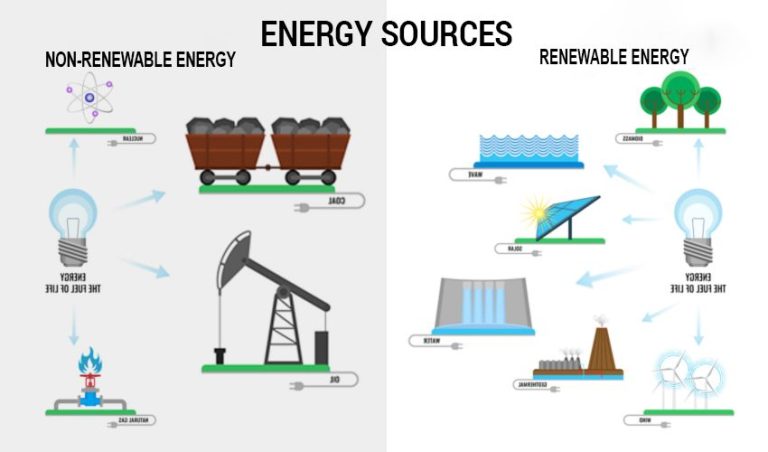What Is An Example Of Electric In Science?
Electricity is the set of physical phenomena associated with the presence and motion of matter that has a property of electric charge. Electricity gives a wide variety of well-known effects, such as lightning, static electricity, electromagnetic induction and electric current. In addition, electricity permits the reception and amplification of electromagnetic radiation such as radio waves. Electricity is related to magnetism, both being part of the phenomenon of electromagnetism.
In the following sections, we will provide examples of electricity and electric phenomena across various scientific fields including physics, chemistry, biology, geology, meteorology, astronomy, engineering, and technology.
Physics
Electricity is a fundamental part of physics, which is the study of matter and energy. Electricity involves electric charges, electric currents, electric fields, and electric potential energy.
Electric charge is a property of subatomic particles like protons and electrons. Protons have a positive electric charge, while electrons have a negative electric charge. The interactions between electric charges are the cause of electrical phenomena. Static electricity is an example of electric charges in action, where electrons can be transferred between objects, resulting in those objects becoming charged.
Electric current is the ordered flow of electric charges. It is produced when an electric potential difference causes charges to flow. Electric current flows easily in materials called conductors. Metals like copper are good conductors that allow electric current to flow through them. Insulators like plastic do not easily allow electric charges to flow.
An electric field surrounds any electric charge or charges. The electric field represents the force experienced by other charges in the field. Electric potential energy is the potential energy held by an electric charge within an electric field. This energy can be converted into other forms when charges flow or accelerate within the field.
Understanding electricity and electrical phenomena is key to unlocking the deeper secrets of physics and the universe. The movement and interaction of electric charges underlies many complex systems and advanced technologies that physics seeks to explain.
Chemistry
Electricity plays a key role in chemistry through the movement of electrons during chemical reactions. Electron flow enables the formation and breaking of chemical bonds. Atoms form bonds by sharing electrons. The exchange of electrons allows atoms to fill their outer electron shells and reach a stable configuration.
In ionic bonding, electrons are transferred from one atom to another, resulting in positive and negative ions that attract each other. The flow of electrons creates the electrostatic forces that hold ionic compounds together. In covalent bonding, electrons are shared between atoms in order to fill their outer shells. The shared electron pairs constitute a covalent bond.
During chemical reactions, electrons are rearranged as old bonds break and new bonds form. Redox reactions involve the transfer of electrons from reducing agents to oxidizing agents. The flow of electrons drives the reaction and enables energy to be released or absorbed. Electrolysis uses an electric current to drive non-spontaneous redox reactions.
The movement of electrons is also critical in corrosion processes and in batteries, which convert chemical energy to electrical energy through oxidation-reduction reactions. Overall, the organized motion of electrons facilitates reactivity and is integral to the transformations of matter in chemistry.
Biology
In biology, electric signals play critical roles in the nervous system, brain, and heart. The nervous system uses electric signals called action potentials to transmit information rapidly throughout the body. These signals allow nerve cells to communicate with each other by propagating a wave of electrical activity along their cell membranes.
In the brain, billions of neurons are communicating with each other constantly through electrical impulses. The brain depends on the transmission of these electrical signals between neurons to perform all its functions, from vision and hearing to motion control, memories, and emotions. Disruptions to the brain’s electrical signaling contribute to seizures, migraines, and neurological disorders.
The heart also utilizes electricity to pump blood effectively. Cardiac muscles contract in a synchronized manner, triggered by electrical impulses generated in the heart’s natural pacemaker cells. This allows the heart chambers to contract and relax in the correct sequence. Electrical activity in the heart can be detected by an electrocardiogram (EKG) and abnormal heart rhythms may require interventions like a pacemaker.
Geology
One example of electricity in geology is piezoelectricity, which is the ability of certain materials to generate an electric charge in response to applied mechanical stress. Rocks such as quartz contain crystals that are piezoelectric. When a piezoelectric crystal is squeezed or bent, the slight shifts in the crystal’s lattice structure generate tiny voltages that accumulate as an electric charge. This phenomenon allows geologists to measure seismic activity and earthquakes using piezoelectric sensors. The buildup of charge in piezoelectric rocks can also generate sparks that trigger lightning strikes during volcanic eruptions and rock fracturing events. Piezoelectricity explains why some rocks seem to produce their own sparks when struck or rubbed together in the right way.
Meteorology
One of the most visible examples of electricity in science can be seen during thunderstorms in the form of lightning. Lightning is a powerful electrostatic discharge that occurs between electrically charged regions within clouds, or between a cloud and the ground. The air in thunderstorm clouds can become charged through processes involving collisions between ice crystals and hailstones. Positively charged ice crystals rise to the top of the cloud and negatively charged particles sink to the bottom. This charge separation leads to tremendous electrical potential differences within the cloud, often reaching billions of volts. When this electrical potential becomes sufficiently strong, lightning is triggered as a massive flow of electrons rapidly neutralizes the separated charges.
Lightning travels through air at speeds of over 100,000 mph and can heat the air it passes through to temperatures hotter than the surface of the sun. The rapid heating and cooling of air near lightning causes the loud claps of thunder heard on the ground. A single bolt of lightning can contain over a billion joules of energy. Lightning strikes the Earth over 8 million times per day. This immense electrical discharge demonstrates the powerful forces of electricity that exist naturally within Earth’s atmosphere.
Astronomy
The study of astronomy provides numerous examples of electricity and electromagnetism in science. The stars and other celestial bodies emit electromagnetic radiation across the entire electromagnetic spectrum. This includes visible light that allows us to see these objects, as well as radio waves, infrared radiation, ultraviolet rays, X-rays and gamma rays.
The sun radiates energy as electromagnetic waves across this broad spectrum. The interaction of the solar wind, which consists of charged particles emitted by the sun, with the Earth’s magnetic field causes auroras. These dazzling light displays are the result of electrons and protons from the sun colliding with molecules and atoms in our atmosphere. The aurora’s glowing colors are produced when the molecules of oxygen and nitrogen react to the influx of particles from the sun.
Pulsars are rapidly rotating neutron stars that emit beams of electromagnetic radiation, observed as pulses when the beam sweeps across the Earth. The extreme densities and magnetic fields associated with pulsars give rise to very high energy emissions. Pulsars produce emissions right across the electromagnetic spectrum, from radio frequencies up to X-rays or gamma rays.
Black holes themselves do not emit or reflect light, since their gravity is so strong that even electromagnetic radiation cannot escape from within the event horizon. However, the energetic interactions of matter just outside the black hole’s event horizon lead to emissions of X-rays and gamma rays. As the black hole rips apart stars and accretion disks form around it, the intense friction and gravitational forces produce this very high energy radiation.
Engineering
Electricity plays a critical role in electrical engineering and electronics. Electrical engineers design, develop, test, and supervise the manufacturing of electrical equipment like electric motors, radar and navigation systems, communications systems, and electrical power generation equipment. Electrical engineers also design the electrical systems of automobiles and aircraft. Electronics engineers design and develop electronic equipment such as broadcast and communications systems, from portable music players to global positioning systems (GPS).
One example of electricity in engineering is electronic circuits. Circuits are found in almost every electronic device and contain various electrical components like resistors, transistors, capacitors and inductors connected by conductive wires through which electric current can flow. The combination and design of the components allows the circuit to perform specific functions like amplification and filtering. Circuit design is fundamental to electronics engineering.
Another example is the use of electricity for communications like radio, television, radar and cellular networks. These systems use electricity to transmit information over the airwaves through electromagnetic waves. Broadcast towers convert audio and video signals into modulated electric currents which are fed to antennas that convert the electric energy into electromagnetic waves that can travel long distances.
Electricity also enables today’s power electronics which manage electrical energy efficiently. High-power semiconductor switches like diodes, thyristors and transistors are used to control and convert large amounts of electrical power from its source into the form required by its load in an optimal way.
Technology
Electricity is essential for powering the technology we use every day. From smartphones to computers to appliances, most modern tech devices require electricity to operate. Electricity allows these devices to perform their various functions, like computing, connecting to the internet, playing music, heating food, and more.
On a larger scale, electricity powers the infrastructure that enables technology to thrive. The internet depends on massive server farms that consume enormous amounts of electricity. Cellular networks rely on thousands of cellular towers and base stations that need power. Manufacturing plants for tech devices run on electricity.
Some key examples of how electricity enables technology:
- Smartphones use electricity to power their processors, screens, radios, speakers, cameras, and more.
- Computers harness electricity to run processors, RAM, hard drives/SSDs, monitors, and peripherals like keyboards and printers.
- The internet depends on a vast network of servers and infrastructure powered by electricity.
- Appliances like refrigerators, microwaves, washers and dryers all use electricity to enable their functionality.
- Electricity powers the manufacturing plants and assembly lines that produce our modern tech devices.
Without electricity, most of our tech would simply not function. It is essential for powering both small consumer electronics as well as the large-scale infrastructure that technology relies on.
Conclusion
Across the sciences, electricity serves as a fundamental driving force that makes so much possible. In physics, electricity powers circuits, appliances, and more through the motion of electrons. Chemistry examines the role of electric charge in bonding atoms together into molecules. Electric signals and impulses allow the nerves and brain to communicate in biology. Electricity drives geological processes that give rise to spectacular rock formations. In meteorology, lightning highlights the immense electrical potential of storm clouds. Astronomers observe magnetic fields across planets, stars, and galaxies stemming from electrical currents. Engineers harness electricity to provide energy, heating, cooling, light, and mobility in the form of technological innovations that drive modern civilization. Looking across all these examples, it’s clear electricity constitutes one of the most versatile and vital phenomena across the sciences. By exploring the principles that govern electricity and how to utilize it, we gain mastery over an elemental force of nature with countless applications that transform our world.






